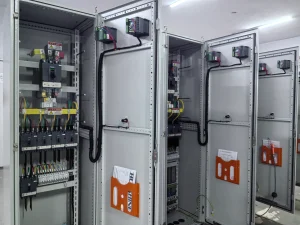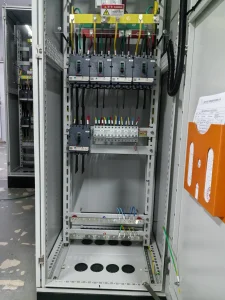When power distribution is unclear, lines trip, breakers nuisance-open, and teams lose hours. Hidden faults and tangled circuits make it worse. The fix? A fixed power distribution box designed for your loads, clearly labeled, code-compliant, and easy to service.
A fixed power distribution box—also called a distribution board, switchboard, or remote power panel (RPP)—safely routes utility or UPS power to branch circuit loads through circuit breakers. It organizes feeders, protects equipment, simplifies maintenance, and scales from 120/240 V to three-phase 480 V and beyond. Choose the correct rating (e.g., 400A switchboard), UL/IEC compliance, surge protection, metering, and space for growth to ensure reliable power distribution and fast troubleshooting.

A fixed power distribution box is a permanently installed assembly—often a panelboard, switchboard, or remote power panels (RPP)—that distributes utility or UPS power to multiple circuits. Unlike portable spider boxes, fixed gear integrates with building electrical distribution: proper fault duty, labeling, and service clearances.
In our control-cabinet projects (semiconductor, engine casting, shield machines), a well-designed box becomes the hub that deliver power safely to drives, PLC cabinets, HVAC, and process loads. Because it’s fixed, it supports higher high-capacity power and integrates metering, alarms, and networked power management.
A power distribution cabinet is the fixed heart of electrical distribution in an industrial line or data center room. It accepts electric power from a utility/UPS and power source switchgear, then feeds downstream panels and PDUs. Inside you’ll find mains, busbars, a selective protection scheme, and clear labeling that make service safe and fast.
A power distribution unit (the in-row or rack device) lives closer to equipment. A rack pdu (your one required mention) or in-row bar distributes outlet power to servers or machines. Together, cabinet + pdu form layered power distribution solutions that scale cleanly across buildings and rows.

Start with capacity in kva and voltage, then choose 1-phase or 3-phase. For North America, 3-phase power at 208/120 V or 480/277 V is common; for labs and offices, 1-phase 120/240 V feeds small panels and pdu power strips. Use three-phase feeds when density grows; they reduce copper and improve balance.
Interrupt rating (AIC) must exceed available fault current. Right AIC keeps faults local and prevents gear damage. Finally, pick busbar and frame sizes with headroom for growth, not just today’s nameplate power requirements.
Inside the cabinet:

This layered distribution system keeps events contained and tells technicians exactly where to look when something trips.
In large data centers, we deploy intelligent power bars to balance legs, reduce stranded capacity, and boost uptime. Smart power distribution features—thresholds, outlet control, real-time power quality—help load balancing and reduce trips. We favor gear that groups reports by row and cabinet for quicker action.
Modern server technology wants stable feeds, neat whips, and alarms that matter. Our teams prefer devices that do energy roll-ups and push events to a single pane for energy management.
Tel: +86-186-6162-7561
Qiyang Road, Gumiao Industrial Park, Chengyang District, Qingdao City, Shandong Province